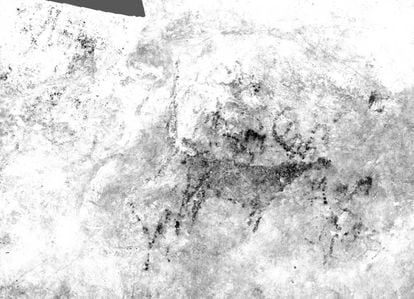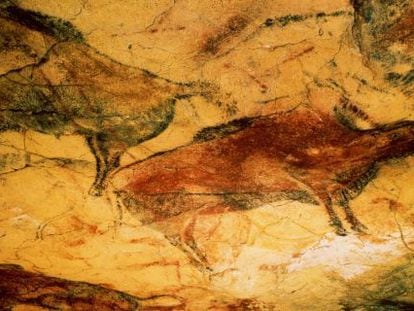Spanish scientists use cutting-edge technology to uncover cave paintings
Team from Cantabria Museum of Prehistory explores area close to Altamira complex

A team from the Cantabria Museum of Prehistory in northern Spain is using cutting-edge technology to uncover Paleolithic cave paintings in an area that includes the UNESCO World Heritage Altamira site.

Led by researcher Roberto Ontañón the team has used non-destructive and non-invasive techniques to extract information about geometric drawings and their underlying surface shapes and color in four caves. Using photometric techniques that involve computational cameras, they have captured a series of images under different light angles, recovering measurements of brush and tool marks in the process.
Ontañón says there are some 70 caves with paintings in the Cantabrian mountain range, and that his team will use photometric techniques to continue uncovering them.
The mountains of Cantabria were a very good place to live during the Ice Age Spanish pre-historian Roberto Ontañón
“Our goal is to visit the caves and use the latest technology to uncover walls that have been painted or decorated but where these marks cannot be seen with the naked eye. These discoveries will add to the map of art in this area,” says Ontañón, one of Spain’s leading prehistorians and an advisor to UNESCO.
The four sites where art has been found are El Rejo (Val de San Vicente), Las Graciosas (Medio Cudeyo), Los Murciélagos (Entremabasaguas) and Solviejo (Voto). The project is being funded by the regional government of Cantabria. The majority of the decorations are simple geometric patterns using red and ochre that are difficult to discern in deep caves many thousands of years after they were created.
The research team is also using lasers and 3D scanners to recreate the features inside the caves, coupled with a range of photographic techniques to create high-definition, three-dimensional images. Aside from a few drawings of deer in one cave, the majority of the images are simple geometric designs.
The drawings have been dated back to between 22,000 and 28,000 years ago, making them significantly older than the bison of Altamira, which were painted around 16,000 years ago. Scientists have dated other cave art in Cantabria back 40,000 years, making them among the oldest so far discovered on the planet.

Cantabria’s mountains host one of the largest concentrations of prehistoric art in the world. “It was a very good place to live during the Ice Age,” says Ortañón. “The Cantabrian Sea warmed up the climate and vast herds of wild animals such as horses passed through that narrow strip between the sea and the mountains.”
The Altamira caves host the largest legacy of prehistoric art in the area, and their discovery in 1868 changed our views of humanity, establishing that our most distant ancestors thought and expressed themselves in ways similar to our own, and had their own concepts of spirituality.
English version by Nick Lyne.












































